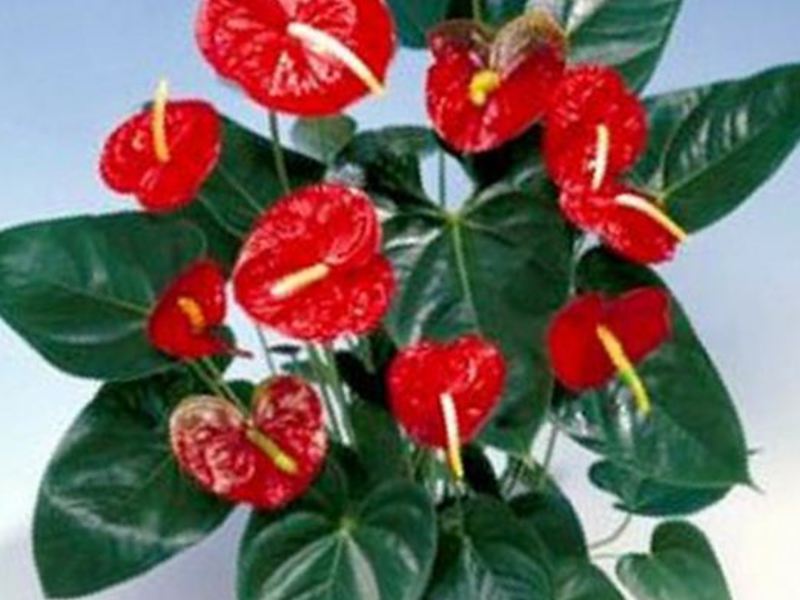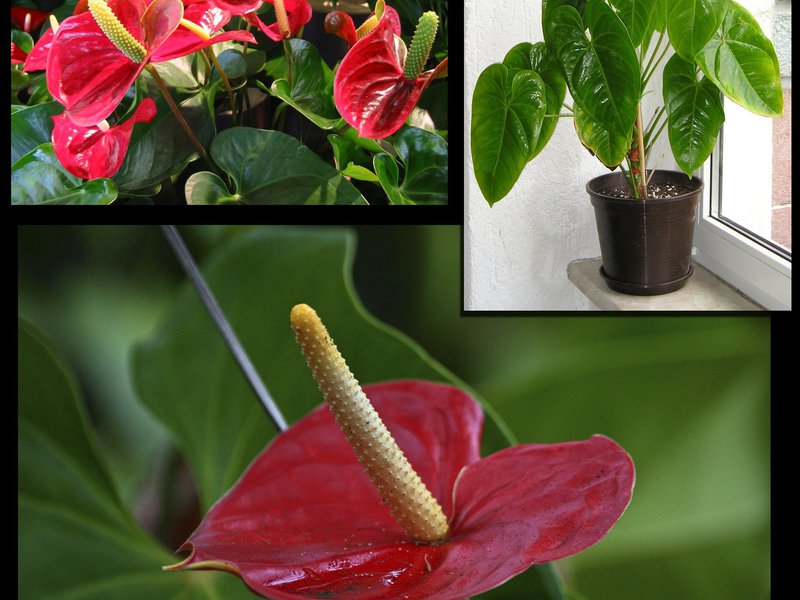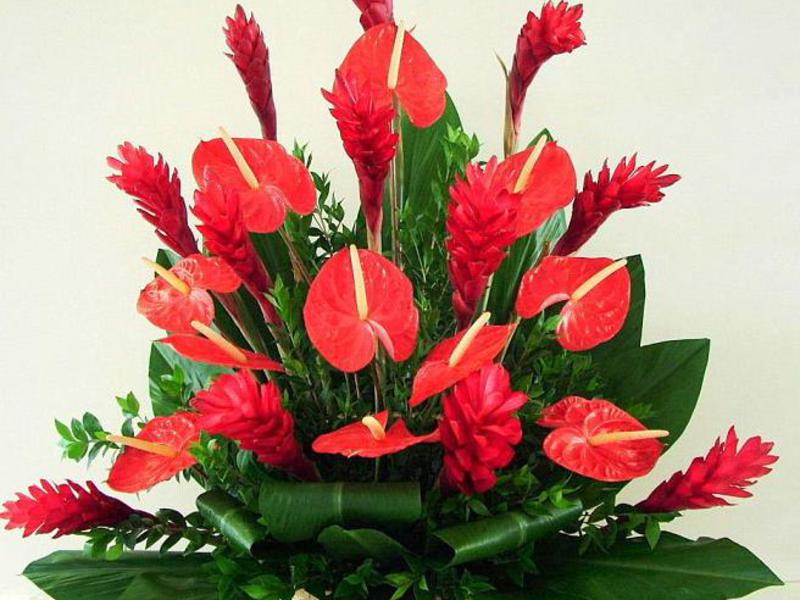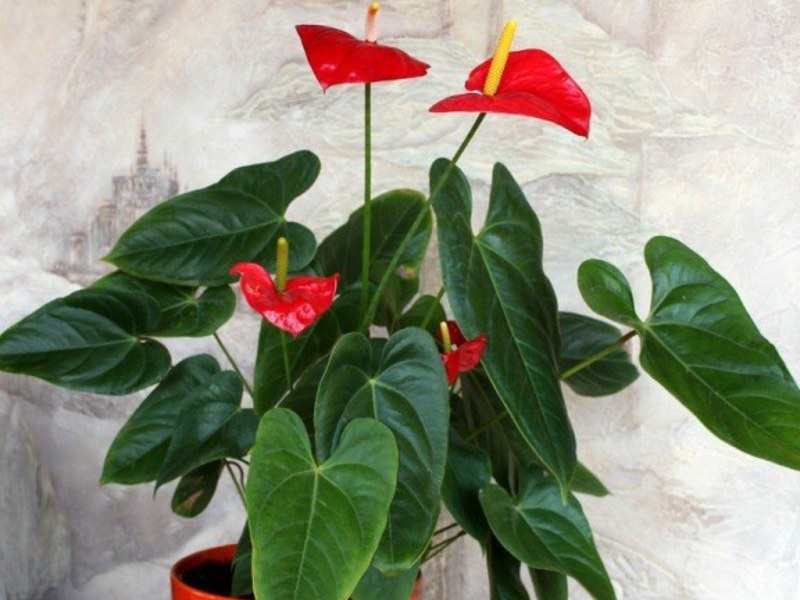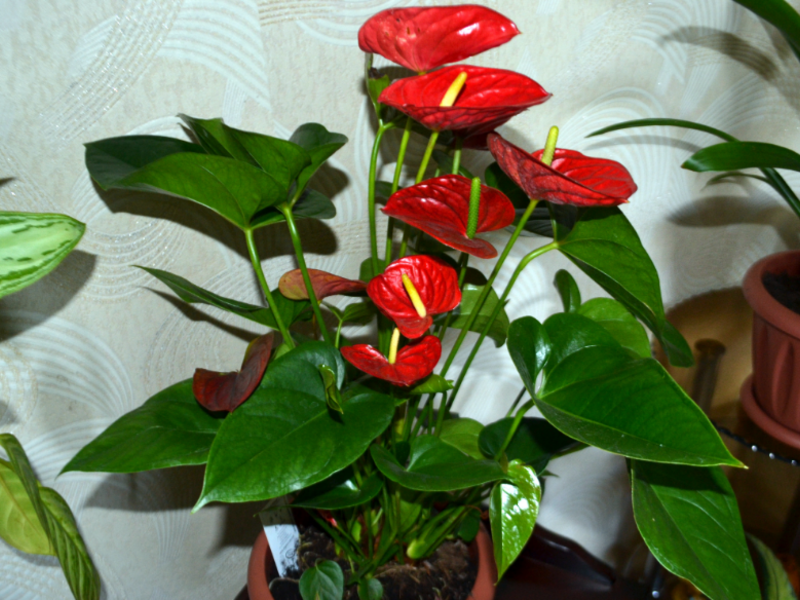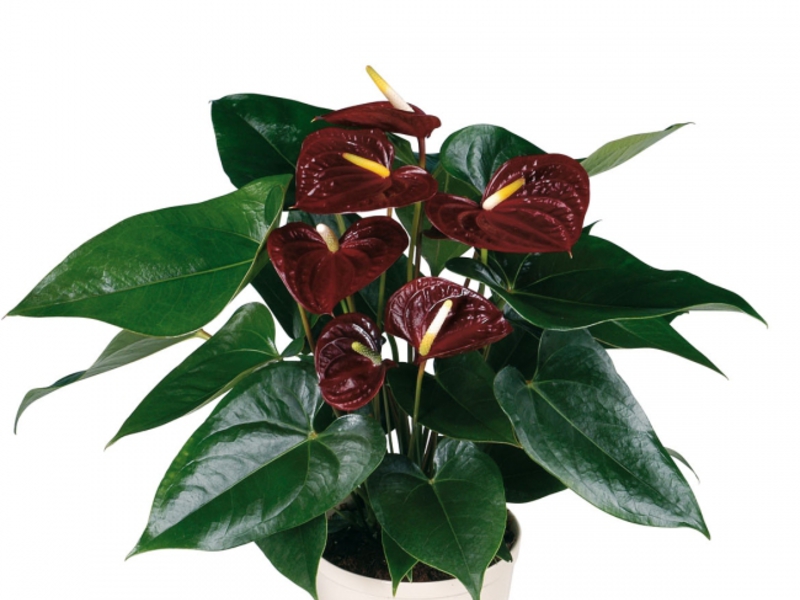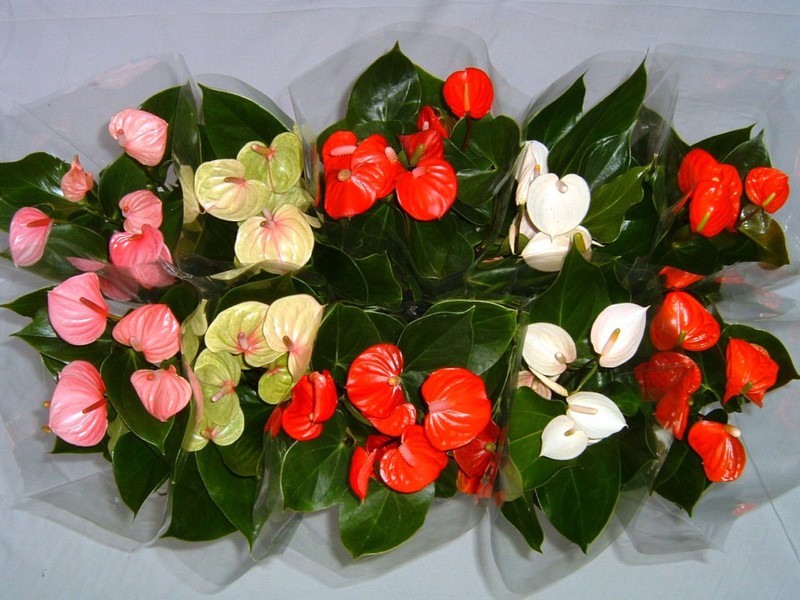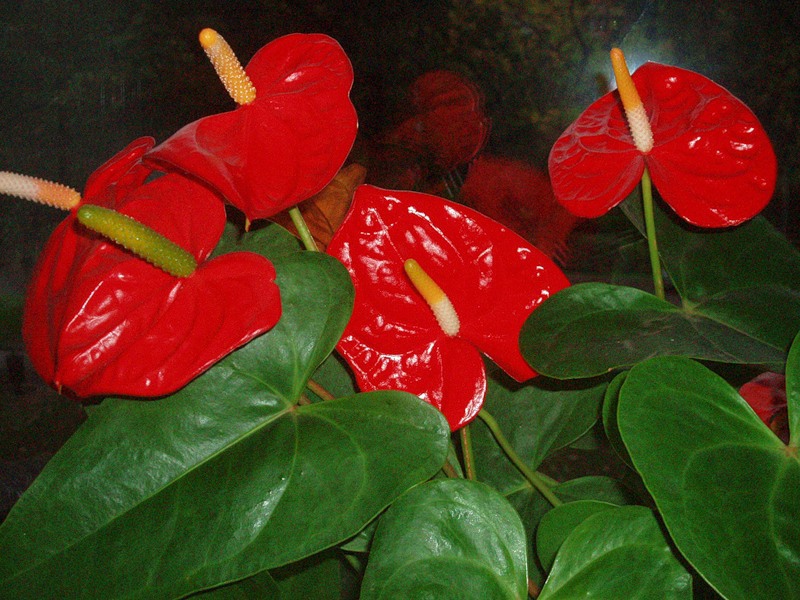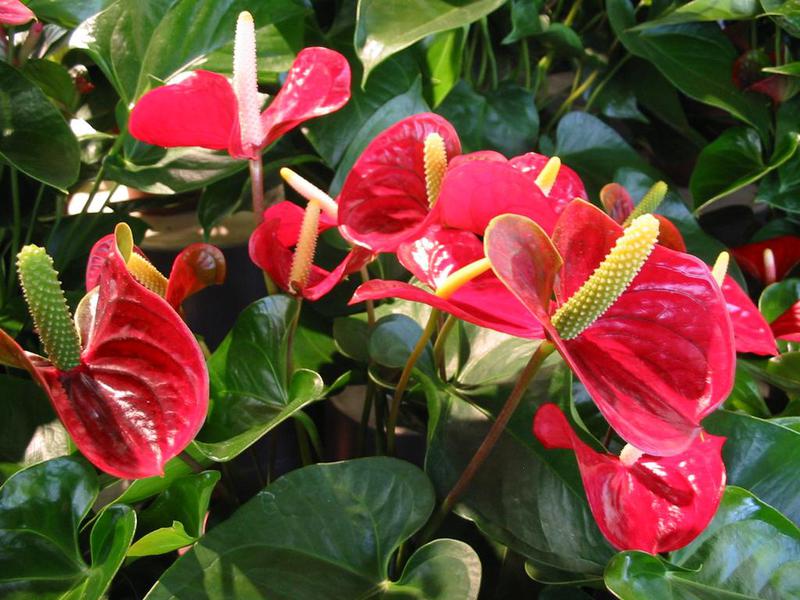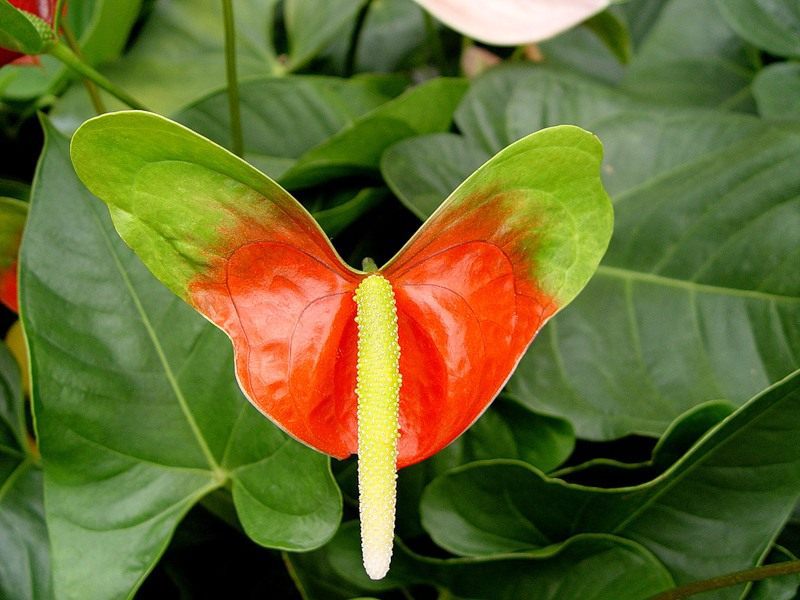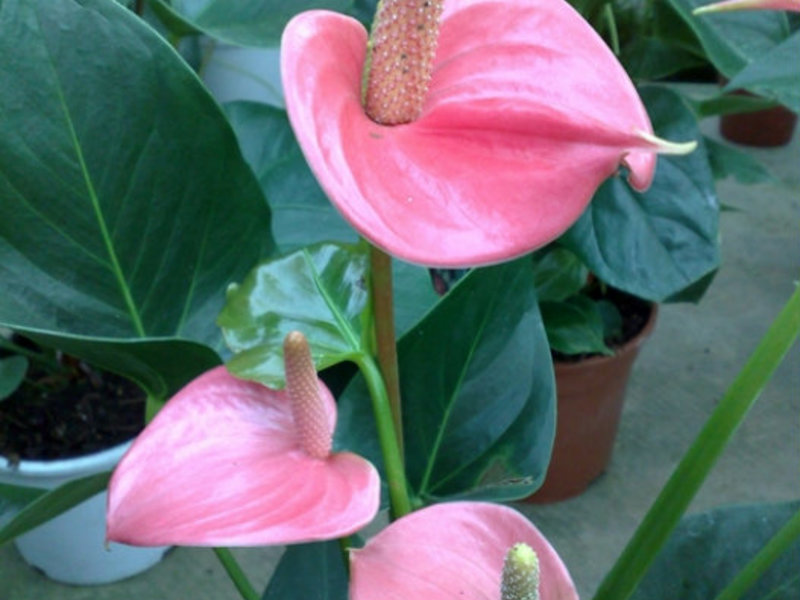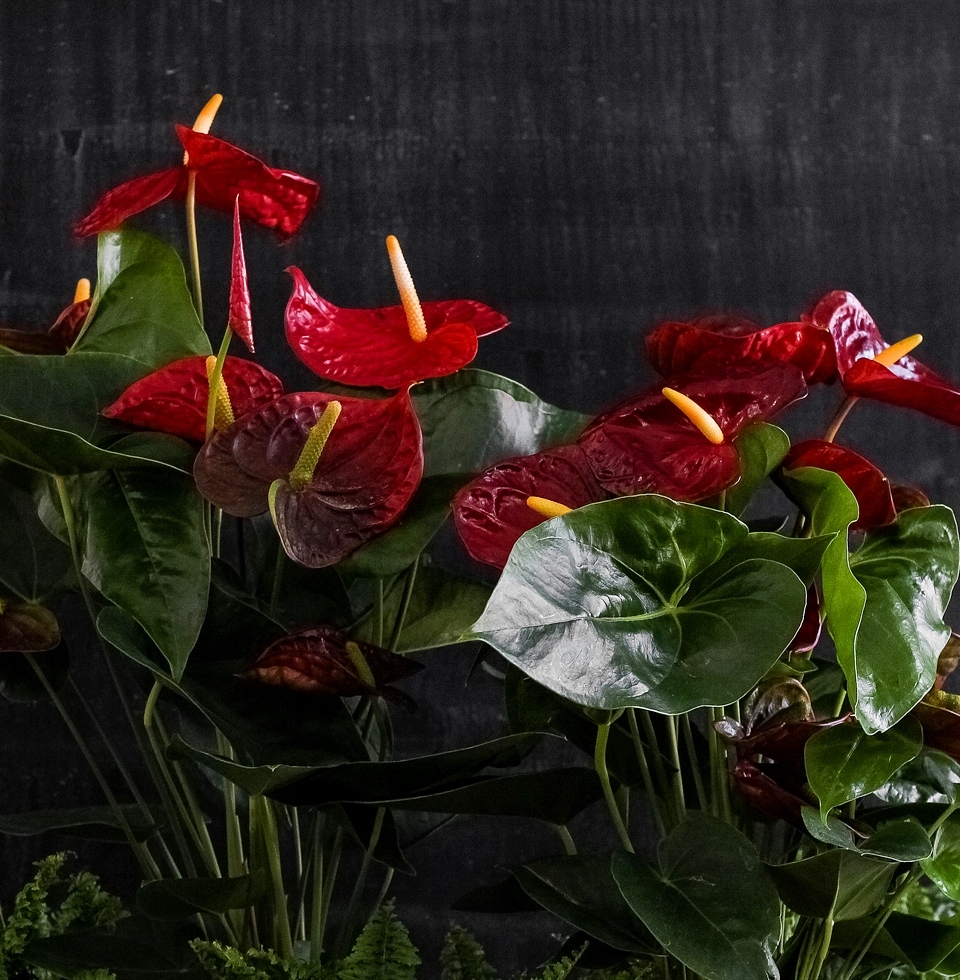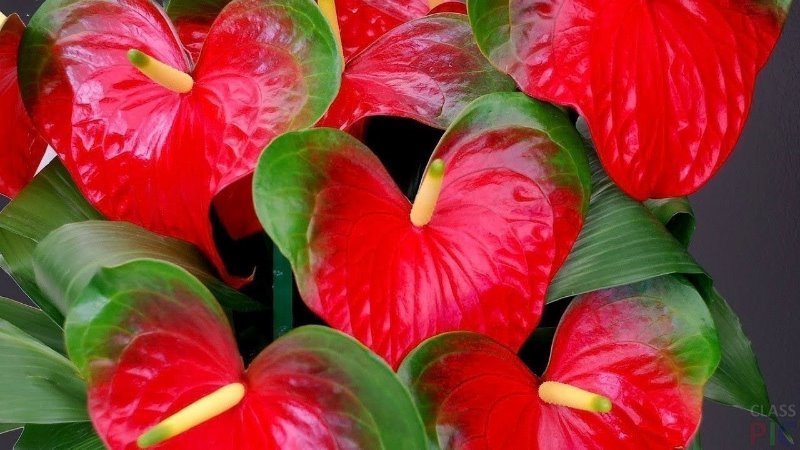Anthurium naturally lives in South and Central America. There it is known as the "tongue of fire", the second name of the plant "flamingo flower". We call this flower "male happiness" - people believe that if you take good care of it, happiness will come to your home. It blooms, forming a bright red heart, but there are varieties with other colors.
The plant has an outstanding appearance. Due to its inflorescences-cobs and smooth shiny surface, it has an outer gloss, it stands as if covered with wax.
Content
Types and varieties
The dark green leaves of the plant are leathery and can have different shapes: heart, elongated, broad-lanceolate, whole, dissected... The main decoration of anthurium lies in an exotic inflorescence, which, depending on the species, can be from snow-white to dark red shades, there are also black ones.
There are about 800 types of culture, but only a small part of them are bred at home. The most famous are:
- Anthurium Andre,
- Crystal,
- Scherzer.
Conventionally, all plant varieties are divided into three types:
- Beautifully flowering.
- Green-leaved.
- Variegated.
Most varieties are capable of growing only in greenhouse conditions; they are difficult to grow in apartments.
André is an epiphyte, reaching a length of one meter, its leaves are large, and the roots are airy. The peduncle is about 15 cm, a glossy heart-shaped blanket with a metallic sheen grows up to 20 cm.
Scherzer is a more common species among florists. Smaller than the previous one, stem up to 40 cm high... The leaves are dull, leathery, dark green on both sides covered with dots. The peduncle reaches 30 cm, has an orange-red blanket, and the ear is orange or yellow.
Variegated varieties are represented by the most recognizable: crystal and majestic. They are similar to each other. Low-growing, large leaves of dark green velvety color with white veins. The difference is in the section of the leaf petiole: the majestic appearance has a tetrahedral, and the crystal one is round.
Climbing, Hooker, Baker, five-leaf and some others are also used for landscaping.
Anthurium flower: home care
For the plant to be comfortable, it is necessary to comply with basic conditions such as humidity, heat and light. If you bring its existence closer to natural, then the flower will delight you with the splendor of green foliage and long flowering from early spring to autumn.
Watering and fertilizing rules
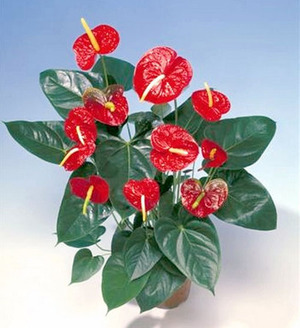 Anthurium is a tropical plant, so it needs abundant but infrequent watering. In summer, it is watered without stagnation of moisture in the pan every 3-4 days. If the water stagnates, this can lead to mold and mildew, which will disrupt the root system.
Anthurium is a tropical plant, so it needs abundant but infrequent watering. In summer, it is watered without stagnation of moisture in the pan every 3-4 days. If the water stagnates, this can lead to mold and mildew, which will disrupt the root system.
Anthurium care at home should be accompanied by fertilization during the growth period... It should be fed with mineral and organic fertilizers every two weeks.The water used is necessarily soft.
During the dormant period, that is, in winter, watering is sharply reduced. Water only once a week, but continue to moisturize with frequent spraying, use a warm shower, and use a humidifier. It is recommended to wipe the leaves with a soft damp sponge to remove dust and additional moisture. Male happiness - anthurium does not like dry soil.
Air temperature
All tropical plants, including this flower, prefer warm conditions. Comfortable is temperature from 20 to 25 degrees during the growing season and at least 18 in winter.
Remember that this masculine flower will not withstand drafts. It is better to place it in a secluded place where there are no circulating air masses, but fresh air is available.
Lighting
Properly organized plant lighting is the key to successful care. The best option would be diffused sunlight. Direct exposure to sunlight can injure the leaves of a delicate flower and spoil the appearance.
In order for a tropical guest to live well in the summer, it can be placed on the eastern or western windowsills. In winter, move the plant to the south side of the room.
If the sun is active, then place the plant pot at a distance of one meter from the window. So you protect him from the negative effects of direct rays.
The plant will stop growing and will not flower if it does not receive sufficient light. The lack of light can be "read" by its leaves, they become deformed. You should take care of the flower in another, more suitable place for it.
Home transplant
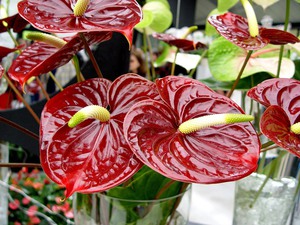 In the spring, anthurium is transplanted into a wide, low container with a good drainage system. The flowerpot is selected according to the plant and should not be large for it, otherwise it will negatively affect the flowering of the plant. Care must be taken during transplanting, as it can be easily damaged fragile leaves and roots.
In the spring, anthurium is transplanted into a wide, low container with a good drainage system. The flowerpot is selected according to the plant and should not be large for it, otherwise it will negatively affect the flowering of the plant. Care must be taken during transplanting, as it can be easily damaged fragile leaves and roots.
Falling asleep with earth, make sure that the rosette of leaves remains in sight, and the roots should be well covered. If roots become visible during plant growth, they should be covered with moist moss. And in the future, in order to prevent the roots from drying out, it must be kept constantly moisturized.
Anthurium is not a fast-growing plant, so transplanting should be done every 1-2 years. Do not rush to transplant the newly purchased plant into a new pot, because anthurium needs time to adapt to new conditions... An adult flower is transplanted after three years.
If the plant is transplanted more often, then this is fraught with the growth of the root system and leaves due to the formation of buds.
The soil
"Male happiness" as a substrate loves a composition of coarse fibrous deciduous, light soddy soil and particles of marsh moss. This mixture retains moisture well and is close to the natural soil where anthurium comes from. The root system needs air, so the substrate needs to be loose.
The flower does not perceive alkali, therefore, it should not be present either during watering or in the soil. Preferred slightly acidic soil reaction... To carry out a transplant, it is not necessary to prepare the mixture yourself, it can be purchased at a specialized store.
Reproduction
Anthurium reproduces by the following methods:
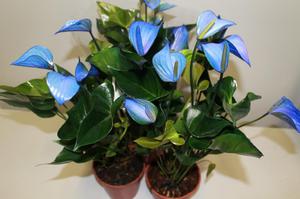 By dividing the daughter stems. Several side shoots with a root system are separated from the mother bush and planted in a prepared container with suitable soil.
By dividing the daughter stems. Several side shoots with a root system are separated from the mother bush and planted in a prepared container with suitable soil.- By cuttings. For reproduction, the plant is cut off the top of the shoot and rooted in a separate container. Take stalks 15-20 cm long with leaves and plant them in separate temporary containers with vermiculite to a depth of about 5 cm to form a root system. A month later, the cuttings will acquire roots, after which they can already be planted in the prepared pot soil.
- Reproduction of anthurium can be carried out by seeds.This method is more laborious and time consuming, therefore it is rarely used at home. But you can try such reproduction.
To get the seeds pollination should be done... Use a cotton swab to periodically transfer pollen from one cob to another. As a result, a fruit will appear when it ripens, it must be removed with tweezers with extreme caution. The seeds ripen for about 8 months, after which they are removed from the fruit and washed with a weak solution of manganese.
Seeds are evenly sown on loose soil with a thin layer of perlite. Then the bottom of the can is pressed into the substrate, the container is sealed with glass or film. Seedlings appear in a few weeks. When a young plant shows two leaves, it is dived into a mixture that consists of equal proportions charcoal, leafy earth, peat and mullein... As it grows, the plant is transplanted into more spacious containers.
Diseases and pests: how to treat at home?
When the rules of care are violated, various troubles arise with the flower.
- Yellow leaves indicate insufficient warmth of the room where the anthurium is located. It is necessary to transfer the flower to warmer conditions, while reducing the humidity for a short period of time.
- If a plant does not bloom, then this may be due to three reasons. The first lies in insufficient lighting, the second - in the lack of nutrients, the last - in a large volume of the container.
- Leaves develop yellowish or brown spots that spread and cause them to fall off. The disease is called anthracnose or septoria and spreads through a diseased plant. Anthurium is also often plagued by downy mildew. It is manifested by yellowing and curling of the leaves, which decrease in size.
- Leaves can turn black as a result of inappropriate water and irrigation practices.
- The plant is not watered with hard water, cold, it must be purified or settled.
- Through the holes at the bottom of the pot, the water should freely flow out, half an hour after watering it is removed from the pan.
Other causes of blackening and curling of leaves include fungus. Gray rot occurs due to excessive moisture, it affects individual parts of the plant. Root rot is very dangerous, which leads to the death of the entire plant.
Pests
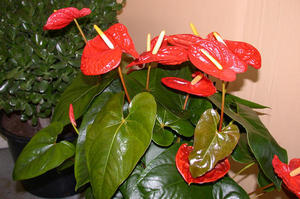 In addition to fungal and viral infections, diseases can also arise as a result of pest infestation. Anthurium amaze aphids, scale insects and spider mites... To avoid their appearance, the leaves of the culture should be washed with warm water. But if the plant is already infected, it should be treated with soapy water or an insecticide that is equally effective against the pest.
In addition to fungal and viral infections, diseases can also arise as a result of pest infestation. Anthurium amaze aphids, scale insects and spider mites... To avoid their appearance, the leaves of the culture should be washed with warm water. But if the plant is already infected, it should be treated with soapy water or an insecticide that is equally effective against the pest.
From all of the above, we can conclude that this culture requires increased attention... However, for indoor plant lovers, caring for it is not very difficult. A little care shown to this tropical guest, and the expenditure of energy will turn into great pleasure from contemplating the exotic beauty that Anthurium will thank you for.
